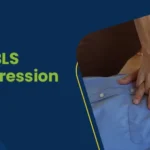Table of Contents
- Introduction
- Understanding AEDs
- How to Use an AED?
- Benefits of Operating an AED
- Steps for Defibrillator Cabinet Installation
- Things to Keep in Mind During Defibrillator Installation
- Final Thoughts on AED Cabinet Installation
Ever heard of a device that is designed for laypersons with little training? Then you must try using an AED or automated external defibrillator. This portable device helps treat victims of cardiac arrests and increases their chances of survival.
Out-of-hospital cardiac arrest (OHCA) has become a common health concern in today’s world. Around 356,000 OHCAs happen in the United States annually with 90% proving fatal for the victims. Several patients with no heart disease history are also experiencing cardiac arrests without any warning.
This calls for devices with AED cabinet installation which emergency responders can use to help victims in emergencies. Properly installed AED cabinets are also crucial to ensure the defibrillators are safe for use. This enables quick access to the devices anywhere and at any time.
This guide will discuss AED cabinet installation and the steps associated with it in detail.
Master ACLS Now
Get ACLS certified with confidence
Understanding AEDs
AEDs are available in public locations like schools, airports, government buildings, and other community spaces. Small, lightweight AEDs can be used at home without a prescription.
An AED’s function is to help revive someone from sudden cardiac arrest. This happens when a problem in the heart’s electrical activity causes irregular heartbeats. This prevents the heart from pumping as it should and stops working suddenly.
The brain and other organs do not get the blood and oxygen they need during a cardiac arrest. It means the victim needs treatment within minutes to prevent death. This is where an AED comes in. It helps prevent permanent damage to the brain and other organs. All AEDs also include instructions on when and how to use them. The responders must also know about AED installation so that they can help the victims immediately.
How to Use an AED?
A crucial factor to consider before talking about the AED cabinet and its installation is the application of the equipment. Untrained bystanders can now use an AED successfully, thanks to advanced technology. They can do this with the help of the machine’s voice prompts and step-by-step instructions. Here is a quick guide to operating an AED device in emergencies effectively:
Operate the AED
Turn on the device. Apply the adhesive pad of the AED to the victim’s exposed chest. Work according to the instructions on the device’s display.
Use it to Analyze the Victim’s Health
Allow the AED device to analyze the victim’s heart rhythm before delivering an electric shock. The equipment can monitor the person’s ECG signal with AED pads. This enables the rescuer to see if there is a viable, electrically stimulable rhythm. Press the button to deliver the shock if the AED gives a shockable voice cue.
Give CPR, if Necessary
If necessary, perform CPR following the voice prompts. Once the victim receives CPR, the device analyzes the victim’s heart rhythm to determine if further shocks or CPR are needed. It is also necessary to call an ambulance or emergency responders as soon as possible before using the AED.
Benefits of Operating an AED
There are several benefits of operating an AED during emergencies. The primary ones include:
- AEDs can save precious treatment time. When anyone uses them before emergency medical service (EMS) personnel arrive, the equipment can improve survival odds.
- The equipment enables rescuers to give electric shocks to revive heart rhythms in victims.
- The AED is lightweight, portable, compact, and battery-operated, which makes it safe and easy to use.
- Modern AEDs do not allow rescuers to give shock to a victim who has a heartbeat. This reduces the risk of doing more harm to the person until emergency medical personnel arrive.
- The devices have a proven track record of helping emergency responders to save lives in public places, at home, or in the workplace.
- Placing AEDs in the workplace and providing a proper management system helps employees in emergencies. It also enables the management to train everyone in first aid techniques.
- Using a defibrillator on a victim having cardiac arrest increases his survival rate by 60 percent.
Steps for Defibrillator Cabinet Installation
AED cabinets can be placed in different areas depending on the building premises. Make sure the cabinet is visible quickly and easy to access on time. This involves ensuring proper defibrillator installation for optimal functionality. Here is a look at the steps to install an AED cabinet successfully:
Step 1: Understand the AED ADA Mounting Requirements
An AED program has a 3-minute response time from the collapse of the victim. The responder must retrieve the AED from the mount and use it on the victim within this time. They can use the 3-minute guide to figure out how many AEDs they may need and where to place them. This applies if the incident happens in a place where there is a hospital nearby.
Before installing the cabinet, check the AED mounting requirements and the AED box mounting height. The cabinet must be placed no more than 48 inches above the ground. This ensures that the installation is in compliance with the ADA guidelines and allows someone who is shorter or in a wheelchair to retrieve the equipment if needed.
Step 2: Place the AED in an Easily Accessible Area
AEDs must be accessible to bystanders and employees at all times. Several people place their AEDs in the same location as their first aid kit or fire extinguishers.
Additional AED cabinet requirements include placing them in the following:
- Common areas or hallways
- Elevators
- Cafeterias or break rooms
- Customer service desks
Avoid keeping the AED in areas that are out of sight for employees and patrons. It is also not recommended to place the equipment in a storage closet, basement, or behind a locked door. This makes it difficult for rescuers to access the AEDs when needed.
Step 3: Check How the Surroundings Affect AED Installation Requirements
Direct sunlight may affect the AED and its durability. The constant heat from the sun can ruin the battery, pads, or the device itself. This makes it useless during an emergency situation. That is why it is advised to avoid placing the AED in direct sunlight.
Ensure the AED is stored in the cabinet to help protect the device’s integrity. For instance, an AED may get exposed to water if it is near a pool or any other water source. It means the AED cabinet height must be such that it does not touch the water body.
Read More: Principles of Early Defibrillation
Things to Keep in Mind During Defibrillator Installation
If the defibrillation process is delayed for any reason, the chances of survival decrease by 7-10%. In other words, waiting for medical personnel to arrive may be too late to save the victim. That is why it is necessary to use an AED immediately to help the victim. It also affects the success rate of resuscitation once the Emergency Medical Services(EMS) team arrives on the scene.
Here are some suggestions for AED cabinet installation in an ideal location:
High-traffic Areas
AEDs must be close to areas where people are most likely to use them. In other words, the cabinet installation must happen in areas where people gather frequently. Other factors include:
- The number of SCA patients
- The layout of the building
- The level of activity in the same area.
To this point, SCA happens due to excessive physical exertion and long hours of continuous work. That is why it is necessary to consider placing AEDs in areas where there is strenuous physical exercise. Examples of high-traffic areas with these characteristics include:
- Large office buildings and conference centers
- Schools, colleges, stadiums, hotels
- Gymnasiums, large restaurants, canteens
- Gathering places like temples, churches, or other places of worship
Accessible Areas
Bystanders and medical staff need to find the AED immediately, so the emergency equipment must be placed in the most obvious places.
Everyone must follow these tips to avoid delaying the first aid process in emergencies:
- Install the AED cabinet in a location where nothing obstructs it. The height of the AED cabinet types should be accessible to all users.
- The cabinet must also include operating instructions and precautions. It must also have multilingual instructions to help people access the AEDs without any hassle.
- Place all AEDs at a specific height to ensure that anyone can reach the equipment in an emergency.
- Make sure the medical staff and other responders can instantly take the AED with them. This helps speed up the response time during emergencies.
Noticeable Places
Everyone must be able to spot AEDs at a glance when they arrive at specific locations. Here are some crucial ways to keep AED cabinets visible:
- Standard signs can help identify the location of the AED. For example, to make the equipment easier to find, apply reflective labels and arrows marked “Automated External Defibrillator.” This equipment must be available across common meeting points, like entrances, receptions, elevators, doors, and pillars.
- Using eye-catching colors to show ADA AED mounting heights is also an ideal means to attract people’s attention. Yellow, green, white, and red are the most common colors for AED boxes.
- It is also necessary to use the AED boxes with safety protection. Many defibrillator boxes have an alarm on the door that goes off when the AED is removed. This helps alert the site staff and nearby people to provide necessary assistance.
- Choose AED boxes that can easily adapt to different temperatures. The best part about using these pieces of equipment is that they do not need any power supply. When storing the equipment, AED cabinets should work perfectly in the local climate. Otherwise, the AEDs will be vulnerable to extreme temperatures in different weather, which may affect their lifespan and performance. The AED cabinets should adjust the interior temperature in areas where extreme climates will occur.
Final Thoughts on AED Cabinet Installation
Installing AEDs at home or in a workplace can give people peace of mind and save lives. To ensure the device is accessible, it is also necessary to know the process of AED cabinet installation. The best way to learn this process is to pursue a certified course with a reputed organization. Individuals have the flexibility to choose in-person or online AED courses based on their requirements. All they need to do is enroll in the courses to learn first aid skills and knowledge.
Through these courses, participants can learn about the AED mounting height, the ideal location to place it, and other first aid techniques. Knowing such techniques enables people to save the lives of victims in emergencies.







